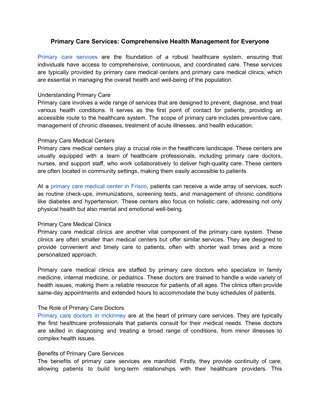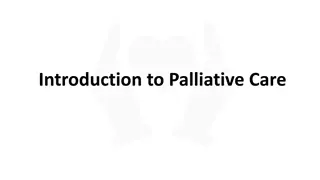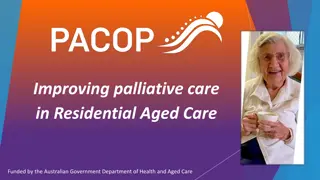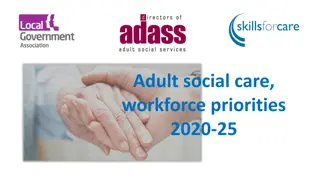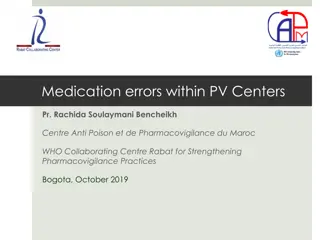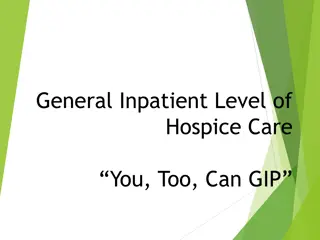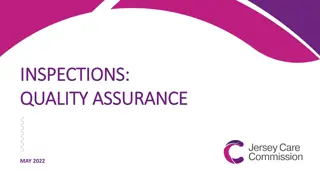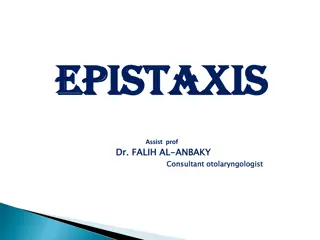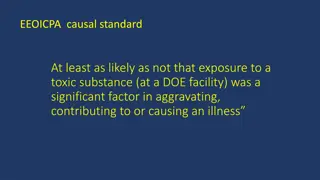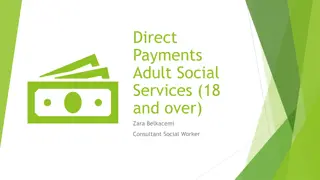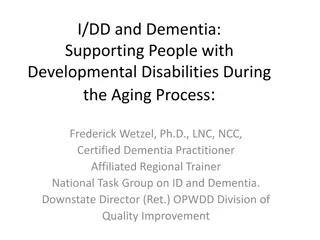Factors Contributing to Individuals Needing Care and Support
Learning outcome on understanding factors leading to individuals or carers requiring care and support, including definitions of learning disability and autism, prevalence, causes, characteristics, hidden disabilities, support services, and effective communication approaches.
Download Presentation

Please find below an Image/Link to download the presentation.
The content on the website is provided AS IS for your information and personal use only. It may not be sold, licensed, or shared on other websites without obtaining consent from the author.If you encounter any issues during the download, it is possible that the publisher has removed the file from their server.
You are allowed to download the files provided on this website for personal or commercial use, subject to the condition that they are used lawfully. All files are the property of their respective owners.
The content on the website is provided AS IS for your information and personal use only. It may not be sold, licensed, or shared on other websites without obtaining consent from the author.
E N D
Presentation Transcript
Uned 443 - Deall ffactorau sy'n cyfrannu at angen am ofal a chymorth ar unigolion a/neu ofalwyr Unit 443 - Understanding factors that contribute to individuals and/or carers needing care and support Deilliant Dysgu : Deilliant Dysgu 7: Deall anabledd dysgu ac awtistiaeth Learning outcome 7: Understand learning disability and autism
www.gofalcymdeithasol.cymru www.socialcare.wales
www.gofalcymdeithasol.cymru www.socialcare.wales
www.gofalcymdeithasol.cymru www.socialcare.wales
Meini prawf asesu: Rydych yn deall: Assessment criteria: You understand: 7.1 Beth yw ystyr y term anabledd dysgu 7.2 Gwahanol fathau o anabledd dysgu a'u hachosion posibl 7.3 Mynychder: unigolion ag anabledd dysgu sy'n awtistig unigolion awtistig sydd ag anabledd dysgu 7.4 Beth yw ystyr y term awtistiaeth 7.5 Damcaniaethau am awtistiaeth a'r dystiolaeth gyfyngedig sy'n ymwneud 'i achos 7.6 Prif nodweddion awtistiaeth a r hyn a olygir gan y triawd o namau 7.7 Pam y gall awtistiaeth fod yn anabledd cudd weithiau a sut y gall hyn effeithio ar unigolion 7.8 Yr ystod o wasanaethau, asiantaethau a gweithwyr proffesiynol sy'n darparu cymorth i unigolion ag anableddau dysgu a/neu unigolion awtistig 7.9 Modelau a dulliau gweithredu y gellir eu defnyddio i gefnogi cyfathrebu ac ymgysylltu effeithiol ag: unigolion ag anabledd dysgu unigolion awtistig 7.1 What is meant by the term learning disability 7.2 Different types of learning disability and their potential causes 7.3 The prevalence of: individuals with a learning disability who are autistic autistic individuals who have a learning disability 7.4 What is meant by the term autism 7.5 Theories about autism and the limited evidence related to its cause 7.6 The main characteristics of autism and what is meant by the triad of impairments 7.7 Why autism can sometimes be a hidden disability and how this can impact on individuals 7.8 The range of services, agencies and professionals which provide support for individuals with learning disabilities and/or autistic individuals 7.9 Models and approaches that can be used to support effective communication and engagement with: individuals with a learning disability autistic individuals www.gofalcymdeithasol.cymru www.socialcare.wales
7.1 Beth yw ystyr y term anabledd dysgu 7.1 What is meant by the term learning disability Dywed Mencap fod anabledd dysgu yn Mencap states that a learning disability is 'llai o allu deallusol ac anhawster gyda gweithgareddau bob dydd, sy'n effeithio ar rywun am eu bywyd cyfan.' a reduced intellectual ability and difficulty with everyday activities, which affects someone for their whole life. Gall unigolion ag anabledd dysgu gael anhawster o ran: deall gwybodaeth newydd neu gymhleth dysgu sgiliau newydd ymdopi'n annibynnol Individuals with a learning disability can have difficulty: understanding new or complex information learning new skills coping independently. Mae anabledd dysgu yn wahanol i bawb. Gall llawer o bobl ag anabledd dysgu weithio, cael perthnasoedd, byw ar eu pen eu hunain ac ennill cymwysterau. A learning disability is different for everyone. Lots of people who have a learning disability can work, have relationships, live alone and get qualifications. Other people might need more support throughout their life. Efallai y bydd angen mwy o gefnogaeth ar bobl eraill trwy gydol eu hoes. www.gofalcymdeithasol.cymru www.socialcare.wales
What is a learning disability? Vijay, James, Leroy, Amy and Emily talk about what having a learning disability means to them. Find out more: www.mencap.org.uk www.gofalcymdeithasol.cymru www.socialcare.wales
7.2 Gwahanol fathau o anabledd dysgu a'u hachosion posibl 7.2 Different types of learning disability and their potential causes Nid ydym bob amser yn gwybod pam fod gan berson anabledd dysgu. Weithiau mae hyn oherwydd bod datblygiad ymennydd person yn cael ei effeithio, naill ai cyn iddo gael ei eni, yn ystod ei enedigaeth neu yn ystod plentyndod cynnar. Gall hyn gael ei achosi gan bethau fel: y fam yn mynd yn s l yn ystod beichiogrwydd problemau yn ystod yr enedigaeth sy'n atal digon o ocsigen rhag cyrraedd yr ymennydd y baban heb ei eni yn cael rhai genynnau wedi'u trosglwyddo oddi wrth ei rieni sy'n gwneud anabledd dysgu yn fwy tebygol salwch, megis llid yr ymennydd, neu anaf yn ystod plentyndod cynnar Mae rhai cyflyrau iechyd lle gallech fod yn fwy tebygol o fod ag anabledd dysgu. Er enghraifft, mae gan bawb sydd syndrom Down ryw lefel o anabledd dysgu, ac felly hefyd llawer o bobl pharlys yr ymennydd. Mae gan rai pobl ag epilepsihefyd anabledd dysgu ac felly hefyd llawer o bobl awtistig. We do not always know why a person has a learning disability. Sometimes it is because a person's brain development is affected, either before they are born, during their birth or in early childhood. This can be caused by things such as: the mother becoming ill in pregnancy problems during the birth that stop enough oxygen getting to the brain the unborn baby having some genes passed on from its parents that make having a learning disability more likely illness, such as meningitis, or injury in early childhood There are some health conditions where you may be more likely to have a learning disability. For example, everyone with Down's syndrome has some level of learning disability, and so do many people with cerebral palsy. Some people with epilepsy also have a learning disability and so do many autistic people. www.gofalcymdeithasol.cymru www.socialcare.wales
7.2 Gwahanol fathau o anabledd dysgu a'u hachosion posibl 7.2 Different types of learning disability and their potential causes Mae rhai cyflyrau sy n golygu eich bod yn debygol o fod ag anabledd dysgu ond a fydd hefyd yn cael effeithiau corfforol neu emosiynol eraill. Mae gan lawer o bobl fwy nag un diagnosis ac mae ganddyn nhw set o gyflyrau sy'n unigryw iddyn nhw. There are some conditions that mean you are likely to have a learning disability but will also have other physical or emotional effects. A lot of people have more than one diagnosis and have a set of conditions that are unique to them. Down's syndrome is a genetic condition that usually causes some level of learning disability. It is caused by an additional chromosome. In every cell in the human body there is a nucleus, where genetic material is stored in genes. Genes relate to our inherited traits (i.e. hair colour and eye colour) and are grouped along rod-like structures called chromosomes. Typically, the nucleus of each cell contains 23 pairs of chromosomes, half of which are from the mother and half from the father. Down syndrome occurs when an individual has a full or partial extra copy of chromosome 21. Mae syndrom Down yn gyflwr genetig sydd fel arfer yn achosi rhyw lefel o anabledd dysgu. Mae'n cael ei achosi gan gromosom ychwanegol. Ym mhob cell yn y corff dynol mae cnewyllyn, lle mae deunydd genetig yn cael ei storio mewn genynnau. Mae genynnau yn ymwneud 'n nodweddion etifeddol (hy lliw gwallt a lliw llygaid) ac yn cael eu grwpio ar hyd strwythurau tebyg i wialen a elwir yn gromosomau. Yn nodweddiadol, mae cnewyllyn pob cell yn cynnwys 23 p r o gromosomau, hanner ohonynt gan y fam a hanner gan y tad. Mae syndrom Down yn digwydd pan fydd gan unigolyn gopi ychwanegol llawn neu rannol o gromosom 21. https://bit.ly/2XZitAS https://bit.ly/2XZitAS www.gofalcymdeithasol.cymru www.socialcare.wales
https://bit.ly/2XZitAS www.gofalcymdeithasol.cymru www.socialcare.wales
7.2 Gwahanol fathau o anabledd dysgu a'u hachosion posibl 7.2 Different types of learning disability and their potential causes Mae X Frau yn gyflwr genetig sy'n effeithio ar fechgyn a merched, er bod bechgyn yn aml yn cael eu heffeithio'n fwy difrifol. Fragile X is a genetic condition that affects both boys and girls, although boys are often more severely affected. X Frau yw achos etifeddol mwyaf cyffredin anabledd dysgu. Mae gwrywod ag X Frau fel arfer datblygiad lleferydd ac iaith gohiriedig, ac anabledd deallusol ysgafn i gymedrol, gyda thua thraean o ddioddefwyr X Frau benywaidd ag anabledd dysgu deallusol. Fragile X is the most common inherited cause of learning disability. Males with Fragile X usually have delayed development of speech and language and mild to moderate intellectual disability, with around a third of female Fragile X sufferers having an intellectual learning disability. Mae X Frau wedi'i nodi fel mwtaniad yn y genyn FMR1 sy'n gyfrifol am reoleiddio a chynhyrchu proteinau a datblygu cysylltiad celloedd nerfol yn ein cyrff. Fragile X has been identified as a mutation in the FMR1 gene which is responsible for the regulation and production of proteins and the development of the connection of nerve cells in our bodies. https://bit.ly/2BsswGR https://bit.ly/2BsswGR www.gofalcymdeithasol.cymru www.socialcare.wales
7.3 Mynychder: unigolion ag anabledd dysgu sy'n awtistig unigolion awtistig sydd ag anabledd dysgu 7.3 The prevalence of: individuals with a learning disability who are autistic autistic individuals who have a learning disability Mae 1.5 miliwn o bobl ag anabledd dysgu yn y DU. Mae rhwng 31% a 35.4% o bobl ag anabledd dysgu yn awtistig. Po fwyaf difrifol yw'r awtistiaeth, y mwyaf tebygol yw hi y bydd gan yr unigolyn anabledd dysgu. Bydd gan 60-70% o bobl sydd chyflwr ar y sbectrwm awtistig anabledd dysgu hefyd. Ar hyn o bryd, mae tua 700,000 o bobl ar y sbectrwm awtistiaeth yn y DU mae hynny n fwy nag 1 o bob 100. Mae cyfradd mynychder cyflyrau sbectrwm awtistig yn uwch ymhlith dynion (2%) na menywod (0.3%). Gall rhai cyflyrau fel awtistiaeth a syndrom Asperger, nad ydynt yn anabledd dysgu, hefyd gyflwyno gydag anabledd dysgu sy n cyd-ddigwydd. Mae anabledd dysgu yn wahanol i anhawster dysgu gan nad yw anhawster dysgu yn effeithio ar ddeallusrwydd cyffredinol. There are 1.5 million people with a learning disability in the UK. Between 31% and 35.4% of people with a learning disability are autistic. The more severe the autism, the more likely the individual is of having a learning disability. 60-70% of people who have an autistic spectrum condition will also have a learning disability. At present, there are around 700,000 people on the autism spectrum in the UK that's more than 1 in 100. The prevalence rate of autistic spectrum conditions is higher in men (2%) than women (0.3%). Some conditions such as autism and Asperger syndrome, which are not a learning disability, may also present with a co-occurring learning disability. A learning disability is different from a learning difficulty as a learning difficulty does not affect general intellect. www.gofalcymdeithasol.cymru www.socialcare.wales
7.4 Beth yw ystyr y term awtistiaeth 7.4 What is meant by the term autism Mae awtistiaeth yn anabledd datblygiadol gydol oes sy'n effeithio ar sut mae pobl yn cyfathrebu ac yn rhyngweithio 'r byd. Mae mwy nag un o bob 100 o bobl ar y sbectrwm awtistiaeth ac mae tua 700,000 o oedolion a phlant awtistig yn y DU. Autism is a lifelong developmental disability which affects how people communicate and interact with the world. More than one in 100 people are on the autism spectrum and there are around 700,000 autistic adults and children in the UK. Mae anawsterau amrywiol y gall pobl awtistig eu rhannu, gan gynnwys y ddau anhawster allweddol sydd eu hangen ar gyfer diagnosis. There are various difficulties autistic people may share, including the two key difficulties required for a diagnosis. https://www.autism.org.uk/advice-and- guidance/what-is-autism https://www.autism.org.uk/advice-and- guidance/what-is-autism www.gofalcymdeithasol.cymru www.socialcare.wales
What is Autism? 16% of autistic people and their families think the public understand autism in a meaningful way. We want to change this and create a society that works for autistic people, and with your help, we can. Share our new film, What is autism? this #AutismAwarenessWeek, narrated by our ambassador, Alan Gardner. Visit www.autism/org.uk to learn more about autism. www.gofalcymdeithasol.cymru www.socialcare.wales
7.5 Damcaniaethau am awtistiaeth a'r dystiolaeth gyfyngedig sy'n ymwneud 'i achos Er nad oes un esboniad clir ynghylch pam mae rhai pobl yn datblygu awtistiaeth ac eraill ddim, mae ymchwil seicolegol wedi rhoi mewnwelediad gwych i'r ffactorau a all fod yn dylanwadu ar ddatblygiad y clefyd hwn. 7.5 Theories about autism and the limited evidence related to its cause Although there is not a single clear explanation for why some people develop autism and others do not, psychological research has provided great insights into the factors that may be influencing the development of this disease. Mae yna ddamcaniaethau sy'n awgrymu y gallai achosion awtistiaeth fod yn Biolegol (Niwrolegol) Seicolegol Cymdeithasol (Amgylcheddol) There are theories that suggest that the causes of autism could be Biological (Neurological) Psychological Social (Environmental) www.gofalcymdeithasol.cymru www.socialcare.wales
Gwaith grp Group work Gan ddefnyddio ffynonellau dibynadwy, ymchwiliwch i ddamcaniaethau awtistiaeth o safbwynt Biolegol Seicolegol neu Gymdeithasol. Using reliable sources, research theories of autism from a Biological Psychological or Social perspective. www.gofalcymdeithasol.cymru www.socialcare.wales
7.6 The main characteristics of autism and what is meant by the triad of impairments 7.6 Prif nodweddion awtistiaeth a r hyn a olygir gan y triawd o namau Individuals with autism usually have difficulties in the following areas: Mae unigolion ag awtistiaeth fel arfer yn cael anawsterau yn y meysydd canlynol: Social interaction Communication Rhyngweithio cymdeithasol Cyfathrebu Restrictive/repetitive interests, behaviors or activities. Diddordebau, ymddygiadau neu weithgareddau cyfyngol/ailadroddus. Gelwir hyn yn y triawd o namau. This is known as the triad of impairments. https://bit.ly/3gSVPTu https://bit.ly/3gSVPTu www.gofalcymdeithasol.cymru www.socialcare.wales
7.6 The main characteristics of autism and what is meant by the triad of impairments 7.6 Prif nodweddion awtistiaeth a r hyn a olygir gan y triawd o namau Social interaction the individual will find it hard to understand what others are thinking or feeling they may get very anxious about social situations they may find it hard to make friends and prefer to be on their own. Communication the individual may find it difficult to explain their feelings they will take everything literally they may seem blunt or rude without meaning to. Restricted/repetitive behaviours the individual may exhibit repetitive movements such as hand flapping they do not cope well with change and may react badly to any alteration in their routine they may become fixated on an activity and insist on repeating the same thing over and over again. Rhyngweithio cymdeithasol bydd yr unigolyn yn ei chael hi'n anodd deall beth mae eraill yn ei feddwl neu'n ei deimlo efallai y byddant yn mynd yn bryderus iawn am sefyllfaoedd cymdeithasol efallai y byddant yn ei chael hi'n anodd gwneud ffrindiau a'i bod yn well ganddynt fod ar eu pen eu hunain. Cyfathrebu efallai y bydd yr unigolyn yn ei chael yn anodd esbonio ei deimladau byddant yn cymryd popeth yn llythrennol gallant ymddangos yn ddi-flewyn-ar-dafod neu'n anghwrtais yn anfwriadol. Ymddygiadau cyfyngol/ailadroddus gall yr unigolyn arddangos symudiadau ailadroddus fel chwifio dwylo nid ydynt yn ymdopi'n dda newid a gallant ymateb yn wael i unrhyw newid yn eu trefn arferol mae'n bosibl y byddan nhw'n canolbwyntio ar weithgaredd ac yn mynnu ailadrodd yr un peth dro ar l tro. www.gofalcymdeithasol.cymru www.socialcare.wales
7.7 Pam y gall awtistiaeth fod yn anabledd cudd weithiau a sut y gall hyn effeithio ar unigolion 7.7 Why autism can sometimes be a hidden disability and how this can impact on individuals Nid yw bob amser yn bosibl gwybod bod gan rywun awtistiaeth oherwydd gall eu hymddangosiad allanol edrych yr un fath phawb arall. Oherwydd hyn, efallai na fydd eu cyflwr yn cael ei ddiagnosio am flynyddoedd lawer ac mae r cymorth hanfodol sydd ei angen arnynt ar yr adeg gywir yn cael ei golli. It is not always possible to know that someone has autism as their outward appearance can look the same as everyone else s. Because of this, their condition may go undiagnosed for many years and the vital support they need at the right time is missed. Gall plant ag awtistiaeth sydd heb ddiagnosis gael eu gwneud i deimlo fel rhywun ar y tu allan yn yr ysgol oherwydd eu bod yn ymddwyn yn wahanol i'w cyfoedion a gall hyn arwain at alw enwau, pryfocio a bwlio. Gall problemau ymddygiad mewn plant awtistig sydd heb ddiagnosis achosi iddynt gael eu gwahardd o'r ysgol a fydd yn cael effaith andwyol ar eu cyfleoedd bywyd. Children with undiagnosed autism can be made to feel like the outsider at school because they behave differently to their peers and this can lead to name calling, teasing and bullying. Behavioural problems in undiagnosed autistic children can cause them to be excluded from school which will have a detrimental impact on their life chances. Adults with autism can struggle in social situations if those around them are not aware that they have the condition. Common traits of autism, such as lack of emotion and inability to understand non-verbal communication, can cause them to act inappropriately and cause offence. This can lead them to being ostracised or worse still, be subject to violence. Gall oedolion ag awtistiaeth gael trafferth mewn sefyllfaoedd cymdeithasol os nad yw'r rhai o'u cwmpas yn ymwybodol bod y cyflwr arnynt. Gall nodweddion cyffredin awtistiaeth, megis diffyg emosiwn ac anallu i ddeall cyfathrebu di-eiriau, achosi iddynt ymddwyn yn amhriodol ac achosi tramgwydd. Gall hyn eu harwain at gael eu halltudio neu, yn waeth byth, fod yn destun trais. www.gofalcymdeithasol.cymru www.socialcare.wales
7.8 The range of services, agencies and professionals which provide support for individuals with learning disabilities and/or autistic individuals Many years ago people with a learning disability/autism were generally locked away in institutions which weren t regulated. 7.8 Yr ystod o wasanaethau, asiantaethau a gweithwyr proffesiynol sy'n darparu cymorth i unigolion ag anableddau dysgu a/neu unigolion awtistig Flynyddoedd lawer yn l roedd pobl ag anabledd dysgu/awtistiaeth yn cael eu cloi i ffwrdd yn gyffredinol mewn sefydliadau nad oeddent yn cael eu rheoleiddio. Due to government legislation there have been huge changes in how individuals with a learning disability or autism are supported. Oherwydd deddfwriaeth y llywodraeth bu newidiadau enfawr yn y modd y mae unigolion ag anabledd dysgu neu awtistiaeth yn cael eu cefnogi. The Equality Act has put in place legislation to protect those with a disability and other protected characteristics. Societal attitudes have evolved over the years and the social model is contributing to a changing view of disability and a focus on overcoming barriers. That said, there is still work to be done to create an equal society. Mae'r Ddeddf Cydraddoldeb wedi rhoi deddfwriaeth ar waith i amddiffyn y rhai ag anabledd a nodweddion gwarchodedig eraill. Mae agweddau cymdeithasol wedi esblygu dros y blynyddoedd ac mae'r model cymdeithasol yn cyfrannu at newid barn ar anabledd a ffocws ar oresgyn rhwystrau. Wedi dweud hynny, mae gwaith i w wneud o hyd i greu cymdeithas gyfartal. www.gofalcymdeithasol.cymru www.socialcare.wales
7.8 Yr ystod o wasanaethau, asiantaethau a gweithwyr proffesiynol sy'n darparu cymorth i unigolion ag anableddau dysgu a/neu unigolion awtistig 7.8 The range of services, agencies and professionals which provide support for individuals with learning disabilities and/or autistic individuals What services, agencies and professionals are available to support individuals with learning disabilities and/or autistic individuals? Pa wasanaethau, asiantaethau a gweithwyr proffesiynol sydd ar gael i roi cymorth i unigolion ag anableddau dysgu a/neu unigolion awtistig? www.gofalcymdeithasol.cymru www.socialcare.wales
7.9 Modelau a dulliau gweithredu y gellir eu defnyddio i gefnogi cyfathrebu ac ymgysylltu effeithiol ag: unigolion ag anabledd dysgu unigolion awtistig 7.9 Models and approaches that can be used to support effective communication and engagement with: individuals with a learning disability autistic individuals Mae'n bwysig cydnabod nad oes dau unigolyn yr un peth. Bydd gan bob un ohonynt ei gryfderau a i dalentau ei hun yn ogystal ag anghenion penodol, ac oherwydd hyn, mae n bwysig, hyd yn oed os yw r anghenion yn debyg, eu bod i gyd yn cael eu trin yn unigol. It is important to recognise that no two individuals are the same. They will each have their own strengths and talents as well as specific needs, and because of this, it is important that even if the needs are similar, they are all treated on an individual basis. Mae n bwysig bod yr unigolyn yn cael ei adnabod a i gefnogi, yn hytrach na r cyflwr. Dylent fod yn rhan o'r holl gynllunio ar gyfer eu gofal, ynghyd theulu a ffrindiau. Dylai'r cynllun gofal hwn ystyried yr hyn sy'n bwysig i'r unigolyn nawr a rhoi hynny ar waith. Dylai'r rhai sy'n ymwneud gofal yr unigolyn hefyd barhau i wrando fel eu bod yn deall gobeithion yr unigolyn ar gyfer y dyfodol ac fel y gallant roi'r cymorth y bydd ei angen arno yn ei le. It is important that the individual is recognised and supported, rather than the condition. They should be involved in all planning of their care, along with family and friends. This care plan should take into consideration what is important to the individual now and puts that into action. Those involved in the individual s care should also keep on listening so that they understand the hopes the individual has for the future and so that they can put in place the support they will need. www.gofalcymdeithasol.cymru www.socialcare.wales
7.9 Modelau a dulliau gweithredu y gellir eu defnyddio i gefnogi cyfathrebu ac ymgysylltu effeithiol ag: unigolion ag anabledd dysgu unigolion awtistig 7.9 Models and approaches that can be used to support effective communication and engagement with: individuals with a learning disability autistic individuals Mae modelau meddygol anabledd yn edrych ar beth sydd o'i le ar yr unigolyn ac nid yr hyn sydd ei angen arnynt. Mae'n edrych ar wella neu reoli'r salwch a buddsoddi adnoddau yn y gwasanaethau sy'n gysylltiedig gofal iechyd er mwyn gwneud hynny. The medical models of disability look at what s wrong with the individual and not what they need. It looks at curing or managing the illness and investing resources into the health care related services in order to do so. Mae modelau cymdeithasol anabledd yn edrych ar sut mae cymdeithas yn cael ei threfnu. Mae n edrych ar sut mae cymdeithas yn achosi rhwystrau, fel mynediad i adeiladau, cyfleusterau i r anabl a chyfleoedd cyflogaeth ac ati. The social models of a disability look at how society is organised. It looks at how society causes barriers, like access to buildings, disabled facilities and opportunities for employment etc. Removing these barriers can give equal opportunities for those who are affected by a disability and allows them to be more independent and have more choice and control over their lives. Gall cael gwared ar y rhwystrau hyn roi cyfle cyfartal i'r rhai y mae anabledd yn effeithio arnynt a'u galluogi i fod yn fwy annibynnol a chael mwy o ddewis a rheolaeth dros eu bywydau. https://www.scope.org.uk/about-us/social-model- of-disability/ https://www.scope.org.uk/about-us/social-model- of-disability/ www.gofalcymdeithasol.cymru www.socialcare.wales
7.9 Modelau a dulliau gweithredu y gellir eu defnyddio i gefnogi cyfathrebu ac ymgysylltu effeithiol ag: unigolion ag anabledd dysgu unigolion awtistig 7.9 Models and approaches that can be used to support effective communication and engagement with: individuals with a learning disability autistic individuals Mae dull seiliedig ar hawliau yn grymuso unigolion i ddeall eu hawliau a rhoi mwy o gyfleoedd iddynt gymryd rhan yn y gwaith o lunio r penderfyniadau sy n effeithio arnynt. A rights based approach empowers individuals to understand their rights and gives them greater opportunities to participate in shaping the decisions that impact upon them. Dylai r unigolyn, a i deulu lle bo n briodol, fod yn bartner cyfartal wrth gynllunio ei ofal a i gymorth, gan sicrhau bod ei nodau a i ddyheadau n cael eu hystyried. The individual, and their family where appropriate, should be an equal partner in the planning of their care and support, ensuring that their goals and aspirations are taken into account. Gall gweithwyr gofal helpu unigolion i gael perthnasoedd cadarnhaol a lleihau r risg o gamfanteisio drwy alluogi oedolion ag anableddau dysgu i ddiffinio r hyn y maent ei eisiau a i ddisgwyl o berthynas. Care workers can help individuals have positive relationships and minimise the risk of exploitation by enabling adults with learning disabilities to define what they want and expect from a relationship. Bydd cynnwys unigolion ag anableddau dysgu wrth gynllunio a gweithredu gwasanaethau lleol yn sicrhau bod ganddynt y cymorth sydd ei angen arnynt i fod yn aelod gweithgar o'r gymuned. Engaging individuals with learning disabilities in the planning and implementation of local services will ensure that they have the support they need to be an active member of the community. www.gofalcymdeithasol.cymru www.socialcare.wales
Home work Gwaith Cartref Myfyrio Reflection DEDDF GWASANAETHAU CYMDEITHASOL A LLESIANT (CYMRU) SOCIAL SERVICES AND WELL-BEING (WALES) ACT CASE STUDY - Simon ASTUDIAETH ACHOS - Simon Refection's are in relation to your own practice within these circumstances you write about. Therefore, you need to be reflection on your own practice, not just the situation and the outcome. When you are completing your reflections you need to consider ... How your practice has been influenced and has reflected the use of different models, theories and approaches. Mae myfyrdodau mewn perthynas 'ch ymarfer eich hun o fewn yr amgylchiadau yr ydych yn ysgrifennu amdanynt. Felly, mae angen ichi fyfyrio ar eich ymarfer eich hun, nid y sefyllfa a r canlyniad yn unig. Pan fyddwch chi'n cwblhau eich myfyrdodau mae angen i chi ystyried ... Sut mae eich ymarfer wedi cael ei ddylanwadu ac wedi adlewyrchu y defnydd o wahanol fodelau, damcaniaethau a dulliau. Sut mae eich ymarfer wedi cael ei ddylanwadu ac wedi adlewyrchu y defnydd o wahanol ddeddfwriaeth sy'n berthnasol i r l Ymarferydd Gwasanaethau Cymdeithasol. Sut mae eich ymarfer wedi cael ei lywio ac wedi adlewyrchu adborth a dderbyniwyd o oruchwyliaeth gyda'ch rheolwr/goruchwyliwr, yn ogystal ag eraill yr ydych yn gweithio gyda nhw. How your practice has been influenced and has reflected the use of different legislation applicable to the role of Social Services Practitioner. How your practice has been informed and has reflected feedback received from supervision with your manager/supervisor, as well as others that you work with. www.gofalcymdeithasol.cymru www.socialcare.wales
Diolch Thank you www.gofalcymdeithasol.cymru www.socialcare.wales



